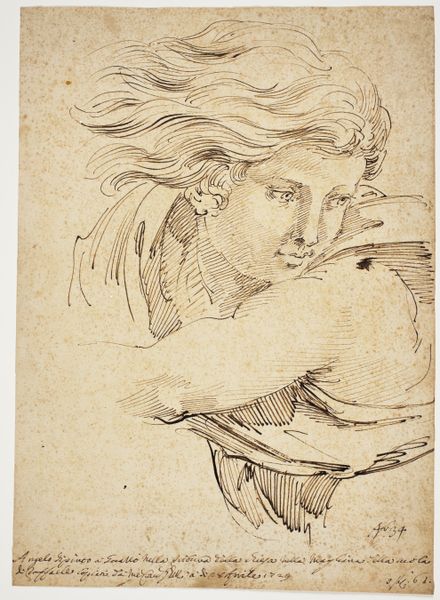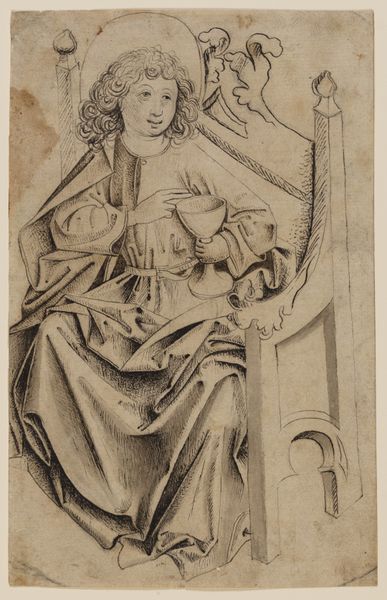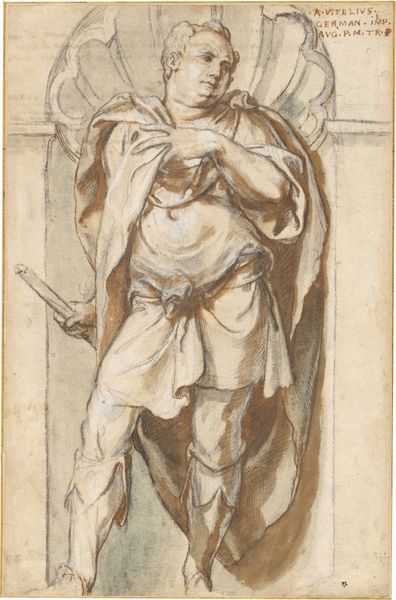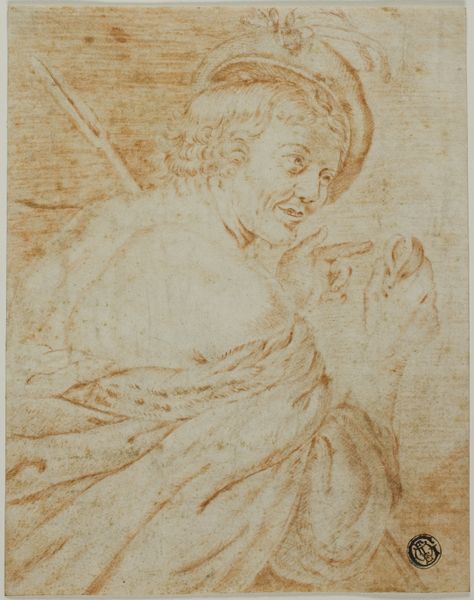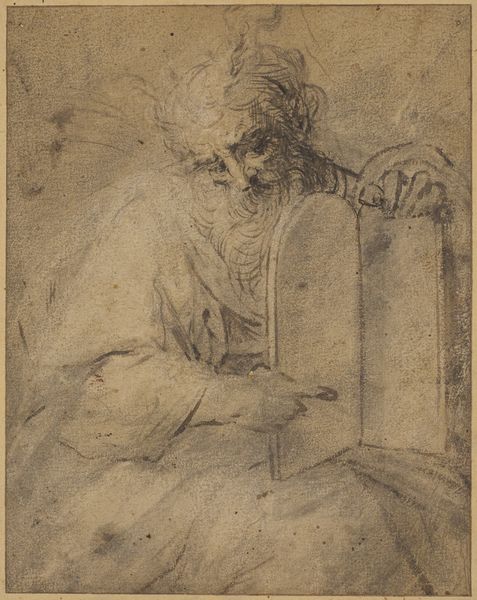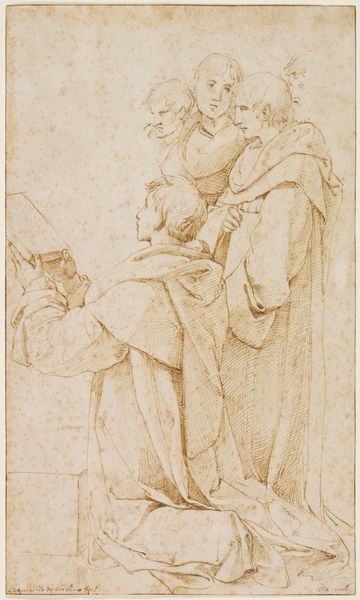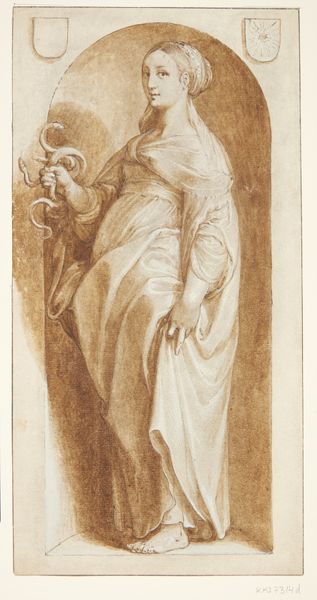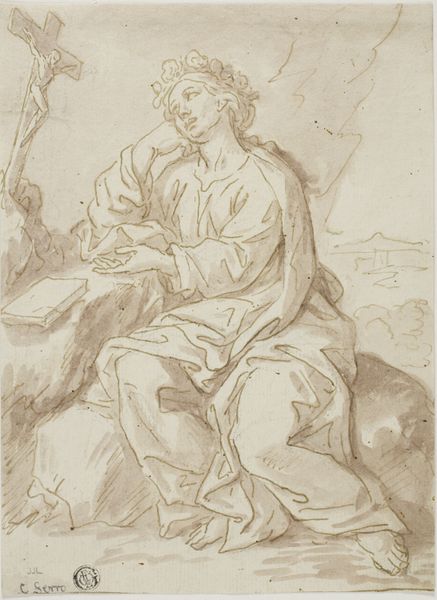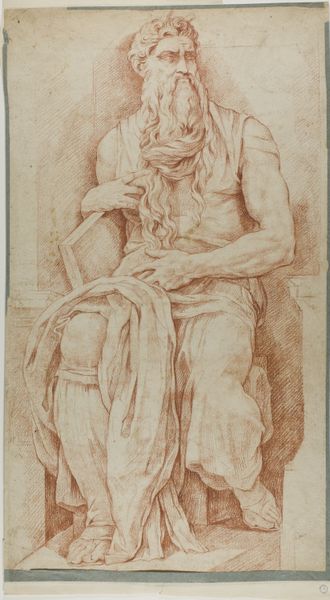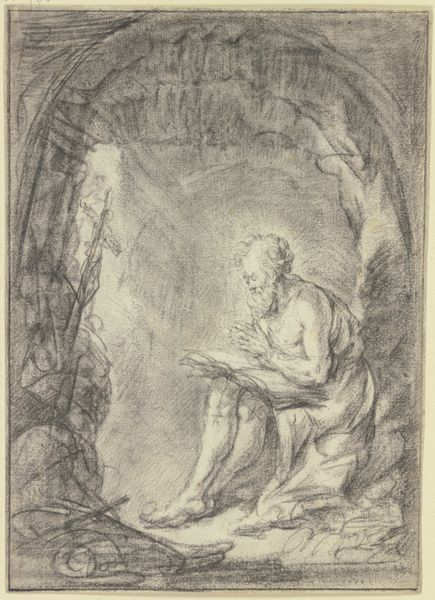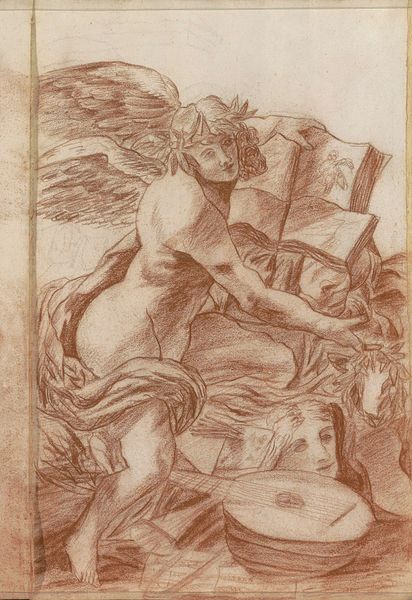
drawing, print, paper, ink, pen, engraving
#
portrait
#
drawing
# print
#
charcoal drawing
#
paper
#
ink
#
pen
#
genre-painting
#
history-painting
#
charcoal
#
engraving
Dimensions: 438 × 308 mm
Copyright: Public Domain
Editor: This is "Seated Youth Writing in Book," attributed to Raphael, dating from the 17th or 18th century. It’s a drawing made with pen, ink, and charcoal on paper, but also seems to exist as an engraving or print. It feels like such a simple scene, yet there’s something really captivating about the way the artist rendered the light and shadow. What's your take on this drawing? Curator: I'm immediately drawn to the labor involved in its creation, and also in its reception. The act of drawing, especially with these materials – the deliberate choice of pen, ink, charcoal combined with an engraving suggests an investment in accessible image-making and its distribution. What kind of access might people have had to these prints and drawings? Editor: That's interesting. So you're thinking about how it was reproduced and who could have owned a copy? I guess the prints would have been far more widely available than an original drawing. Curator: Exactly. It makes you wonder about the original purpose, whether it was meant to be disseminated from the start, potentially challenging the traditional notion of art as unique. Also, the paper itself is part of the material story – was it handmade, what kind of pulp, who was making this paper? Was there a shift of who consumed books or education itself that played a factor? Editor: I hadn’t even considered the paper. So much work went into making art accessible that we might not notice! Curator: Consider too the sitter: the labor implied in learning, writing, and the potential future employment dependent on such learned activities. Editor: That’s a very different angle than I considered! I suppose I just saw a nice drawing of a person, but it’s far more complex than that. It is clear there were many unseen processes in place that supported education, artistic and broader consumption.
Comments
No comments
Be the first to comment and join the conversation on the ultimate creative platform.
